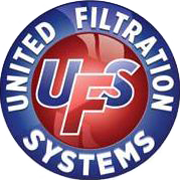 Borosilicate glass microfibers are considered to be the ideal filter media available for the coalescing of liquid aerosols. This material is neither liquid adsorbent nor absorbent and consequently, is superior for retaining its original properties while in service. The C-Type element has a two-layer structure, an inner particle capture-layer and an outer drainage layer. Liquid droplets remain mobile once captured and travel through the fine-pored captured-layer, along the intersecting microfibers, growing in size as they progress. These coalesced droplets are transferred to the large-pored drainage-layer, from where they drain by gravity into the filter bowl.
Borosilicate glass microfibers are considered to be the ideal filter media available for the coalescing of liquid aerosols. This material is neither liquid adsorbent nor absorbent and consequently, is superior for retaining its original properties while in service. The C-Type element has a two-layer structure, an inner particle capture-layer and an outer drainage layer. Liquid droplets remain mobile once captured and travel through the fine-pored captured-layer, along the intersecting microfibers, growing in size as they progress. These coalesced droplets are transferred to the large-pored drainage-layer, from where they drain by gravity into the filter bowl.
The filter housing must be piped so that the gas stream enters port 2 (deep port) and exits port 1 (shallow port) so that the captured liquid can pass through the element (coalesce) and drop into the drain. Do not pipe backwards or the coalesced liquid will pass back into the system. Liquid collected in the filter bowl can be removed by a manual or fully automatic drain.
Metallic, plastic, paper (pleated), and baffle units do not exhibit the same natural properties as borosilicate glass microfibers, i.e. metallic and plastic elements do not have fibers to turn liquid contamination into droplet form. A film builds up on these elements, thus increasing ∆p and reducing long-term efficiency. Paper elements have fibers but tend to retain the water droplets like a sponge and there again, ∆p increases and reduces long-term efficiency. Baffles are fairly efficient at removing bulk contamination. Unfortunately, most contamination in compressed air lines is in the form of fine mist.
Compressed air, even from a new installation, is a heavily contaminated product. Dirt is ingested through the compressor inlet, oil is carried over from the piston, and water condenses out at the higher air pressure. The demand for more sophisticated and more reliable pneumatic systems can only be met by ultra-clean compressed air. Ultra-clean compressed air is most conveniently produced in the production plant by the installation of a well-designed Coalescing Filtration System. This system will remove essentially all solid and liquid contamination, with minimum maintenance and low operating costs. Our Coalescing Filters remove up to 99.99% of solid and liquid particles down to 0.01 micron, producing truly clean compressed air.
The C-type elements are completely self-supporting and are sealed into the filter housing simply by tightening a retaining nut. No end caps, gasketing materials or support cores for required. At element change only the filtering material itself is discarded, and this complete disposability keeps replacement element costs down.
The coalescing filters are designed to have an initial dry pressure drop of less than 2 psi. Thereafter the pressure drop will increase very slowly as solid particles are captured and retained in the captured-layer of the element. UFS recommends changing the filter element when the pressure drop reaches 10 psi. The optional differential pressure indicator will give a visual warning of the need to change the filter element.
For more details please feel free to contact our sales team at (586) 802-5561 or email Dirk Loveland (dirk@unitedfiltration.com), or Aaron Garvin (aaron@unitedfiltration.com).
